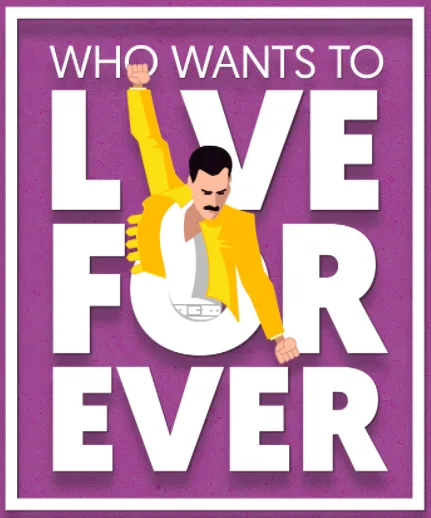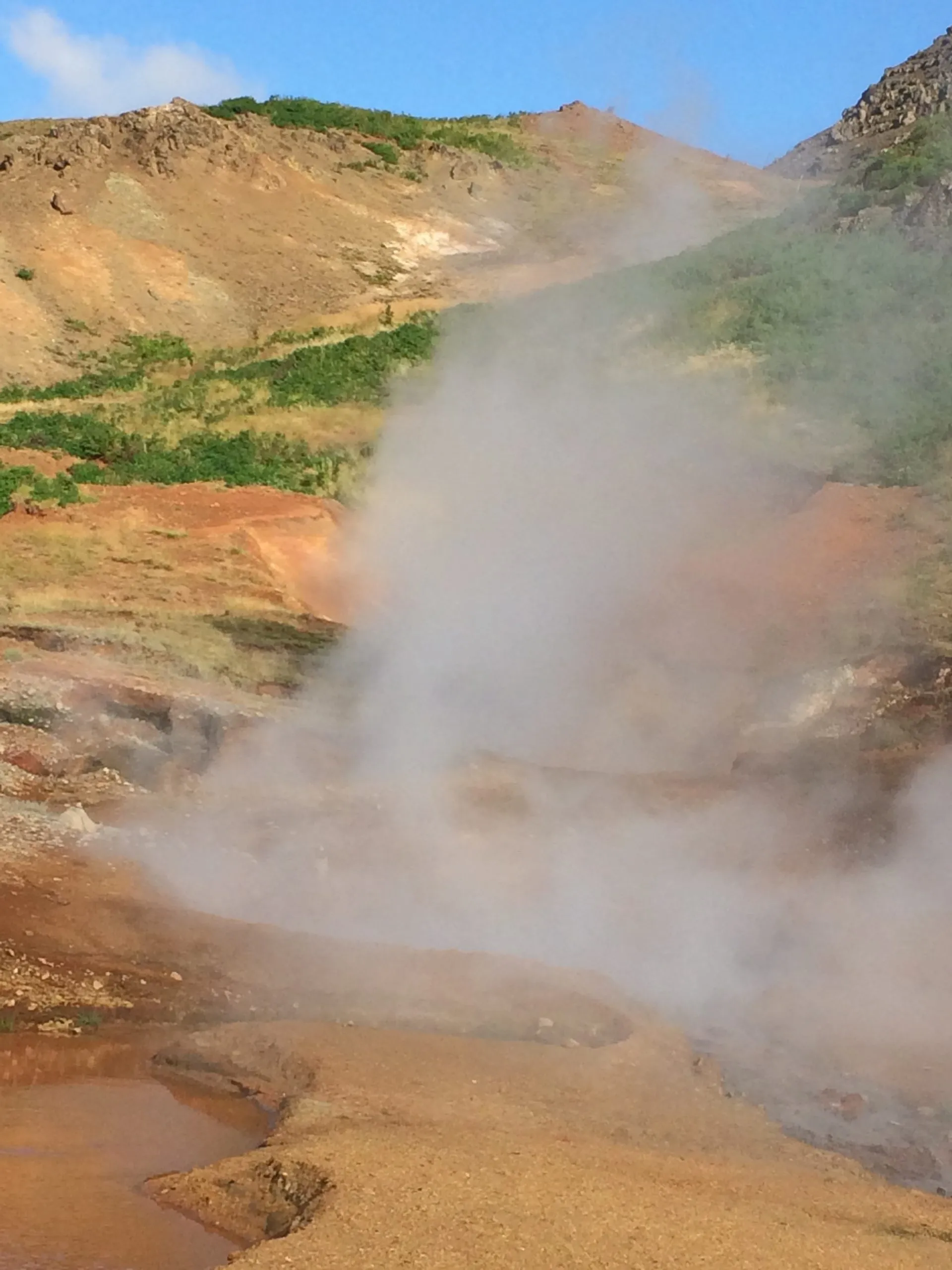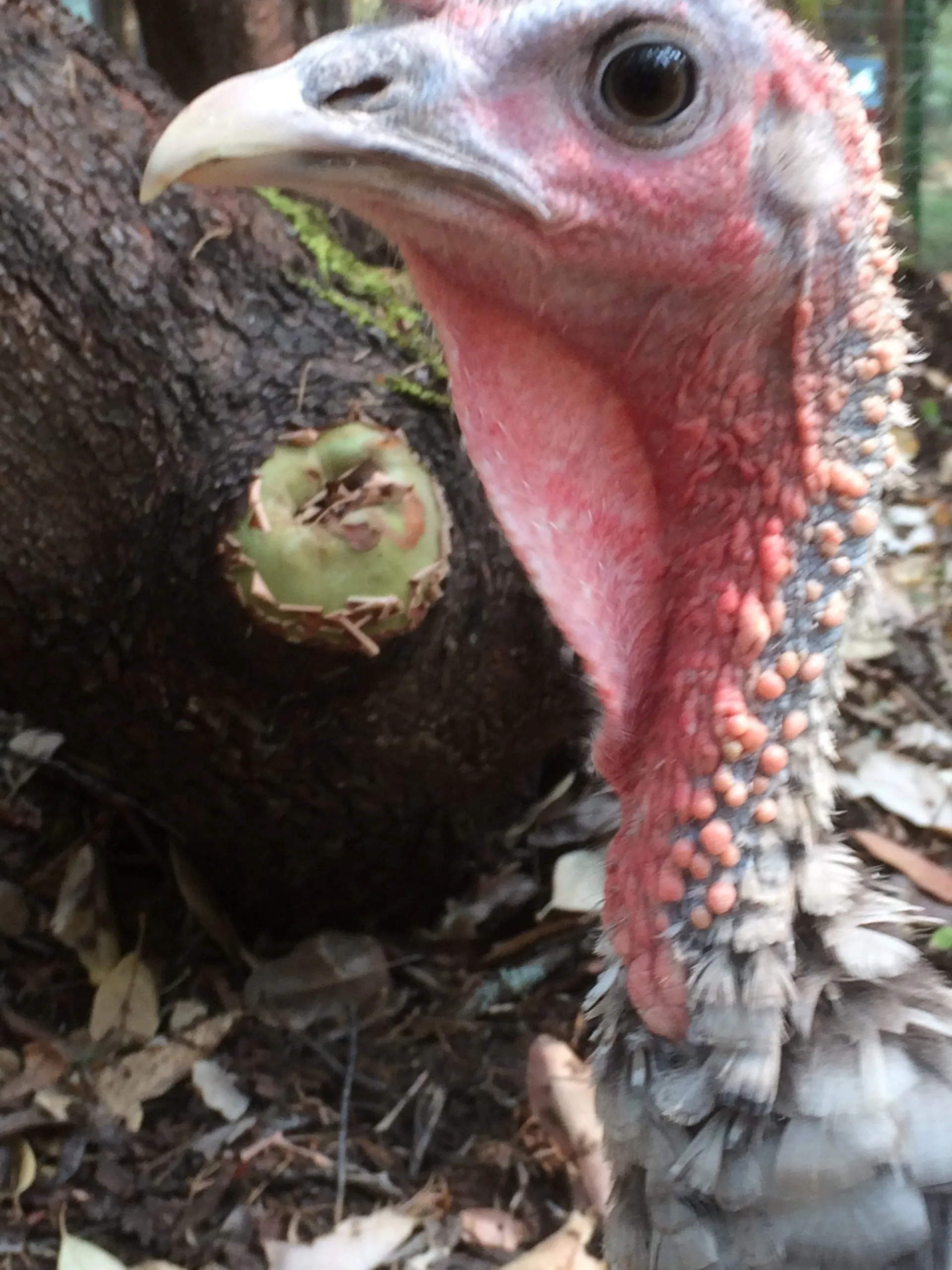
Who Wants to Live Forever in Iceland
Misleading title, but it caught your eye perhaps. I recently attended the Who Wants to Live Forever? conference in Iceland, and enjoyed two full days of interesting speakers, gave a talk myself, and on top of all that enjoyed several days roaming around Iceland. I’ll share the highlights. (The title could just as be who wants to read forever: reader alert—long article ahead.)

Before the conference we took a scenic cycle tour around a nearby town, enjoying dipping into natural hot springs’ pools mingled with the adjacent stream’s cold water, eating eggs cooked in natural steam, and seeing the tiny buildings of ancient Icelanders. I also took two spectacular bike tumbles: the first a gentle downhill slide on a hillside of wild lupine flowers (invasive species now, but highly recommended as a cushion) and the second an over-the-handlebars-onto-asphalt proof that my bone density is indeed quite good. Few abrasions and a shiner, glad I had a bit of makeup for my talk a few days later!
The first day of the conference was directed at a mixed audience: professionals as well as the general public.
Rangan Chatterjee, MD, star of the popular BBC television series Doctor in the House (every patient’s, every doctor’s best and worst dream: move into a family’s home for an upclose glimpse and fix of the family’s health problems) spoke about The Four Pillars of Health: Eat, Sleep, Move, Relax. Doing each of these activities well is the key. Did you know that sleep deprivation (7 hours a night is an absolute minimum in my opinion) has been associated with insulin resistance, intestinal permeability, inflammation, visceral fat accumulation and leptin dysregulation, just to start with? Besides sleeping you might want to consider breaking up your daytime activity: five minutes of activity in twelve chunks a day does your metabolism more good than a solid 60, if you’re dealing with insulin resistance. He has a book coming out soon for a nice review of what really should be basic knowledge for all of us: how to live!
Lilja Kjlarsdottir (Iceland has an incredible naming system: you can only choose first names on the approved list … about 1000 to choose from, and last names are just your father’s name plus –dottir for females, and –son for males. Phone books list by first names.) spoke on the health of our cells and their components, especially our mitochondria. Healthy people alternate energy fuels between burning carbohydrates (sugars: sweets, fruits, grains, and veggies) and burning fats (dietary yes, but also stored fats we burn for fuel after hours without eating.) Unhealthy people can’t get around to burning fat: these are the folks who don’t eat many calories but never burn off their belly fat. What can help is: l-carnitine supplements, exercise, and estrogen in women.
Dr. Satchidananda Panda of the Salk Institute spoke about circadian rhythms, a topic of intense interest to me because of their impact on cognition, mood, metabolism, immune function, gut health, weight and general health…just those. In a 2010 survey 2/3 of all US adults over the age of 65 had at least one chronic disease: frankly, they rarely appear in isolation—let’s just say two or three chronic diseases. Our internal clock allows us to time the competing processes that are required for good health: to have a good clock is to be healthy. Sleep in the dark, work in the day makes so much of life better—the real question is how to fix broken clocks. Two powerful clock setters are light (bright in the day, dim in the evening) and food (eat breakfast, fast after dinner.) Eating in a ten-hour window every day (time-restricted feeding) results in improvement in overall health. Less obesity, less cancer, less diabetes. If you sleep less, you’re likely to eat more, and eat worse food for you.
Ben Greenfield took adventurous participants (I bowed out after my two tumbles the previous day) on a bio-hacking bike ride before the conference sessions. He demonstrated the kinds of breathing he uses for different purposes: before a competition, engage in some fire breathing. As quickly as possible, breathe in dynamically through your nose and passively let the air out through your mouth. At the conference he discussed seven variables that will make or break your efforts to be the best human you can be. To build strength and power you want to exercise your explosive, fast-twitch muscles (also good for balance as you age, helpful for preventing osteoporosis) and your sustained power applications. Once a week do some super slow lifting of heavy weights, taking 30 seconds for the lifting and 30 seconds for the lowering of the weight. Also once a week do something like the New York Times 7-minute Workout, quick as you can, with just 10 seconds rest between them. Overall you can read about his seven variables here: they include movement, nutrients, electricity (caution), air, light, water, and emotions.
Dr. Doug McGuff will always hold a memorable reputation in my mind: he prides his gym as being the home of abandoned walkers. He firmly believes that resistance exercise is the key to increasing not just your life span but your health span. We so easily lose physical strength as we age, and we pay dearly for that loss. Not just fragile bones, but changes in our body’s lipids, our circulation, blood sugar control, and more: our body has an innate tendency to make new blood vessels. If you challenge your muscles, your blood vessels will be required to fuel new muscle growth. If you fail to challenge your muscles, you are as likely to make new blood vessels to feed a growing tumor. There are 179 genes associated with aging: you can revert them to their youthful signaling patters with 26 weeks of strength training: resulting in healthier brains and bodies… and the abandoned walkers of the formerly frail. (You don’t need a gym: hold a belt between your hands, arms outstretched. Wrap the belt around your fists so you can get a good grip. Pull your hands apart—they won’t move, the belt will get more taut—with 50% of your strength for 20 seconds, then 75% of your strength for 20 seconds, then 95% of your strength, and wrap it up with 20 seconds of everything-you’ve-got! Amazing you’ve just done a strength workout.)
Dr. Bryan Walsh addressed the question of whether working on your mind can improve your health and longevity: does the mind matter and can we truly say “mind over matter” is real? In a word, yes. Many mental, emotional characteristics impact health: optimism is associated with less chronic disease. For Dr. Walsh, however, purpose is his “magic molecule.” Getting in touch with your reason for living can reduce your risk of diabetes, heart disease, dementia and improve the quality of your sleep and your sex life! You have a sense of purpose if you know “who you are”, if you can state your life purpose, you know your core set of beliefs and you take intense enjoyment in what you do every day. You can cultivate a sense of purpose by asking yourself, “How do I want to be remembered?” and by finding ways to give to others, to think of others. You perhaps have seen the studies: people given a chunk of change are happier when told to spend it on others than on themselves.
Diana Rodgers, R.D. of the Sustainable Dish website and podcast, has become an expert on the intricacies of sustainable agriculture. She showed us great pictures of Iceland’s roving sheep (whom I came to love in our four days in a camper van) and refined my concept of cows grazing on pasture. Moving the cows is important, whether the predators do it (wolves chasing cows to a different feeding grounds) or farmers do it with tractors! Eat the grass, urinate and defecate and rough up the ground—then leave it alone and the grass grows back better than before, absorbing carbon from the atmosphere and trapping it into the ground. Sounds like magic, doesn’t it?
Whew, and that was just the first day.
Dr. Bryan Walsh returned on day two for a survey of the key factors in disease and health, considered both from an eagle-eye view (we need oxygen for healthy cells) and the microscopic eye: are those tiny red blood cells lacking iron, copper, vitamin A, B6, vitamin C, zinc or are they contaminated with lead?
 Yours truly was up next. After sharing the absolutely cutest picture of one of my male turkeys (who knew turkeys could be so absolutely adorable) I went over the physiology of folks at greater risk for Alzheimer’s. All of us, in both our brains and our bones, are constantly engaged in “taking out” parts that are damaged (by infection, lack of nutrients, or toxins) and working to replace them with healthy parts. Folks at great risk for Alzheimer’s can make nasty amyloid plaque scars on their damaged nerves more easily and they can be challenged at replacing worn out nerve connections with new ones. Start with knowing where you are: if you have insulin resistance or the ApoE4 gene, get to work: it is a thousand times easier to prevent dementia than to reverse it. Treatment relies on many themes appearing elsewhere in Iceland: fast overnight for 13 hours or more, teach your body to burn fat not just sugar for fuel, move around a lot and lift heavy weights, get 8 or more hours of sleep, at night time. Women in menopause need hormone replacement, and it’s not just safe, it’s better in every way than not taking it—if done properly. And on and on, as Dr. Dale Bredesen has discussed, and as I’ve talked about elsewhere, and here, and here, on this website.
Yours truly was up next. After sharing the absolutely cutest picture of one of my male turkeys (who knew turkeys could be so absolutely adorable) I went over the physiology of folks at greater risk for Alzheimer’s. All of us, in both our brains and our bones, are constantly engaged in “taking out” parts that are damaged (by infection, lack of nutrients, or toxins) and working to replace them with healthy parts. Folks at great risk for Alzheimer’s can make nasty amyloid plaque scars on their damaged nerves more easily and they can be challenged at replacing worn out nerve connections with new ones. Start with knowing where you are: if you have insulin resistance or the ApoE4 gene, get to work: it is a thousand times easier to prevent dementia than to reverse it. Treatment relies on many themes appearing elsewhere in Iceland: fast overnight for 13 hours or more, teach your body to burn fat not just sugar for fuel, move around a lot and lift heavy weights, get 8 or more hours of sleep, at night time. Women in menopause need hormone replacement, and it’s not just safe, it’s better in every way than not taking it—if done properly. And on and on, as Dr. Dale Bredesen has discussed, and as I’ve talked about elsewhere, and here, and here, on this website.
And finally, Dr. Mark Cucuzella proved to us that he is not only an incredible (and barefoot) runner, but he is an inspiration: he gets kids running and somehow has encouraged almost everyone in his town and particularly in the hospital to clean up their diets! He has low carb diet plans and fans, everywhere through his small town hospital, and has a program for teaching medical doctors in training to …. Cook! What a concept!
Great conference and great trip. Iceland is the land of geothermal energy and stunning waterfalls, expansive vistas and rocky coastlines, lava fields both barren and completely covered in multi-colored lichen! Wandering sheep…and more sheep, and more. Great food: beef, lamb, and fresh fish on every menu. They also raise horses for meat, but I missed my chance: it was only on one menu I saw and I went for the cod instead. Next time. Here was my favorite surprise about Iceland: every neighborhood, every small town, has a great swimming pool. In addition to a pool for laps, each facility has at least one large soaking hot tub as well. The top of the line facility was in the neighborhood of our Reykjavik AirBNB and had a swimming pool, two large hot tubs, three smaller hot tubs and a cold tub, and a steam bath. After steaming I went into the icy-cold pool and the Icelandic woman (everyone of course speaks English) eyed me for the newby that I was and instructed me that I “must go from the very cold to the very hot pool three times each” and promised that I would the be a “new person.” Since I was less than 24 hours out from my encounter with asphalt I took her advice, and have to say she was right. My torqued neck healed faster than my black eye, and for that I credit the abundant water available for immersion in spectacular Iceland!


